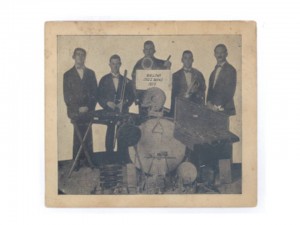We noted before that one consequence of the rise of coffee-houses in 17th-century Europe was the development of probability theory as a mathematical treatment of reasoning with uncertainty. Ian Hacking’s history of the emergence of probabilistic ideas in Europe has a nice articulation of the key events, all of which took place a decade either side of 1664:
- 1654: Pascal wrote to Fermat with his ideas about probability
- 1657: Huygens wrote the first textbook on probability to be published, and Pascal was the first to apply probabilitiy ideas to problems other than games of chance
- 1662: The Port Royal Logic was the first publication to mention numerical measurements of something called probability, and Leibniz applied probability to problems in legal reasoning
- 1662: London merchant John Gaunt published the first set of statistics drawn from records of mortality
- Late 1660s: Probability theory was used by John Hudde and by Johan de Witt in Amsterdam to provide a sound basis for reasoning about annuities (Hacking 1975, p.11).
Developments in the use of symbolic algebra in Italy in the 16th-century provided the technical basis upon which a formal theory of uncertainty could be erected. And coffee-houses certainly aided the dissemination of probabilistic ideas, both in spoken and written form. Coffee houses may even have aided the creation of these ideas – new mathematical concepts are only rarely created by a solitary person working alone in a garret, but usually arise instead through conversation and debate among people each having only partial or half-formed ideas.
However, one aspect of the rise of probability in the mid 17th century is still a mystery to me: what event or phenomena led so many people across Europe to be interested in reasoning about uncertainty at this time? Although 1664 saw the establishment of a famous brewery in Strasbourg, I suspect the main motivation was the prevalence of bubonic plague in Europe. Although plague had been around for many centuries, the Catholic vs. Protestant religious wars of the previous 150 years had, I believe, led many intelligent people to abandon or lessen their faith in religious explanations of uncertain phenomena. Rene Descartes, for example, was led to cogito, ergo sum when seeking beliefs which peoples of all faiths or none could agree on. Without religion, alternative models to explain or predict human deaths, morbidity and natural disasters were required. The insurance of ocean-going vessels provided a financial incentive for finding good predictive models of such events.
Hacking notes (pp. 4-5) that, historically, probability theory has mostly developed in response to problems about uncertain reasoning in other domains: In the 17th century, these were problems in insurance and annuities, in the 18th, astronomy, the 19th, biometrics and statistical mechanics, and the early 20th, agricultural experiments. For more on the connection between statistical theory and experiments in agriculture, see Hogben (1957). For the relationship of 20th-century probability theory to statistical physics, see von Plato (1994).
POSTSCRIPT (ADDED 2011-04-25):
There appear to have been major outbreaks of bubonic plague in Seville, Spain (1647-1652), in Naples (1656), in Amsterdam, Holland (1663-1664), in Hamburg (1663), in London, England (1665-1666), and in France (1668). The organist Heinrich Scheidemann, teacher of Johann Reincken, for example, died during the outbreak in Hamburg in 1663. Wikipedia now has a listing of global epidemics (albeit incomplete).
POSTSCRIPT (ADDED 2018-01-19):
The number 1664 in Roman numerals is MDCLXIV, which uses every Roman numeric symbol precisely once. The number 1666 has the same property, and for that number, the Roman symbols are in decreasing order.
References:
Ian Hacking [1975]: The Emergence of Probability: a Philosophical study of early ideas about Probability, Induction and Statistical Inference. London, UK: Cambridge University Press.
Lancelot Hogben [1957]: Statistical Theory. W. W. Norton.
J. von Plato [1994]: Creating Modern Probability: Its Mathematics, Physics and Philosophy in Historical Perspective. Cambridge Studies in Probability, Induction, and Decision Theory. Cambridge, UK: Cambridge University Press.
